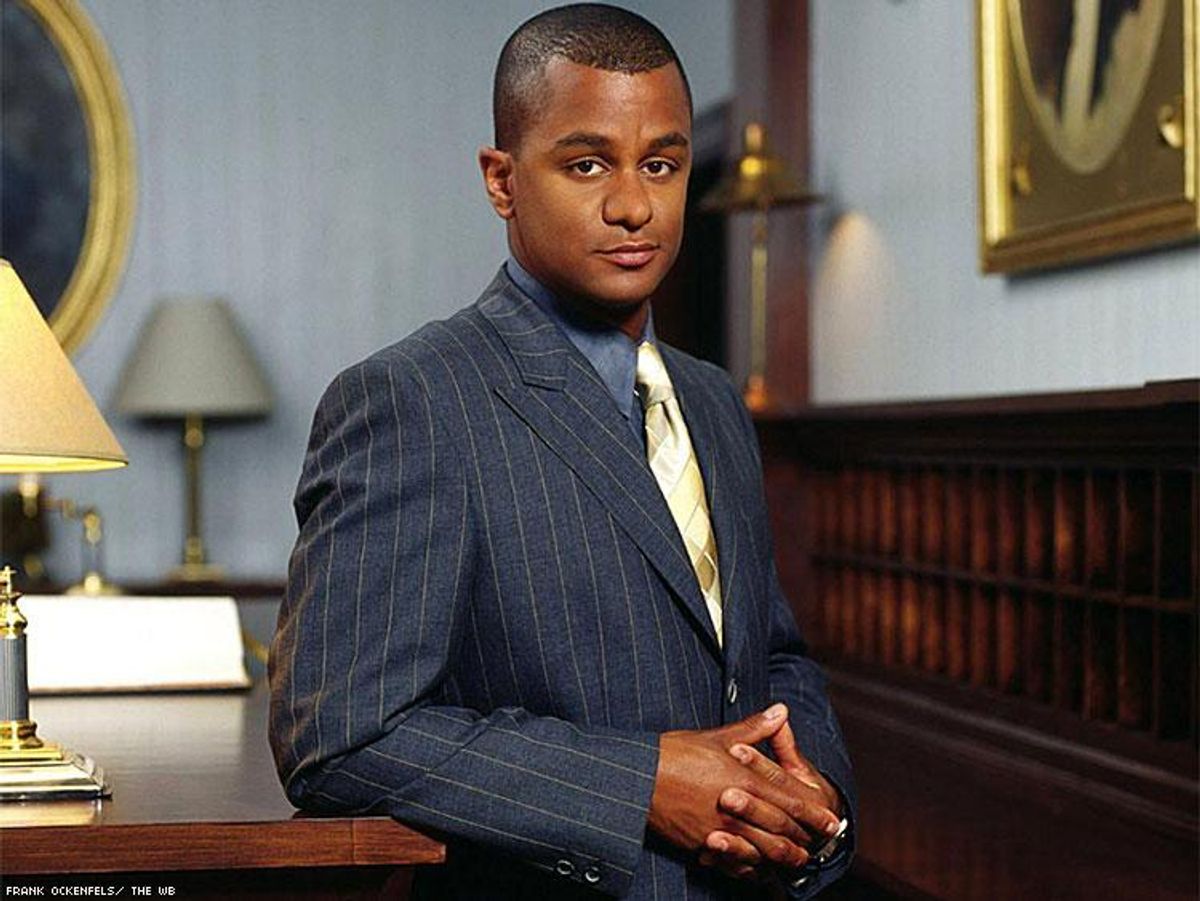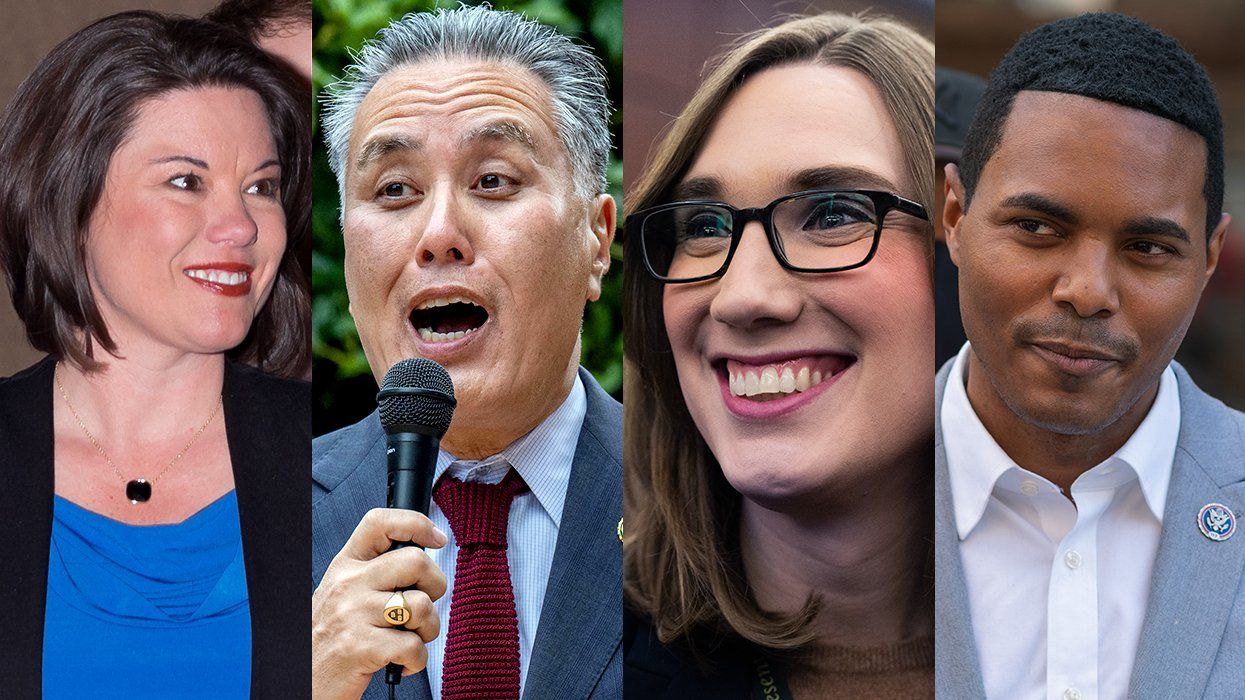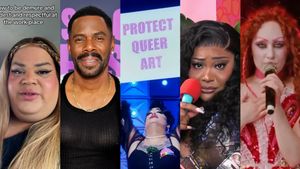In one of the queerer moments of the Netflix revival of Gilmore Girls -- a four-part miniseries released Friday that follows a mother-daughter friendship -- the residents of the series' fictional Connecticut town, Stars Hollow, discussed plans to throw its first-ever gay Pride parade.
The character of Taylor (Michael Winters), helming a town meeting, revealed to attendees that he had timed the event for 2016 to coincide with the 70th birthday of Liza Minnelli. However, he said, "after exhaustive research and an informal census, we made a surprising discovery: There just aren't enough gays in Stars Hollow."
After running through the "minuscule" list of queer residents, which included Donald (Sam Pancake) and an unseen couple named Adele and Lois -- and revealing that neighboring mayors had refused requests to "lend us some of their gays" -- Taylor announced that the parade had to be scrapped.
The news of the lack of LGBT residents came as a shock to many of the characters. "How is that possible?" asked Lorelai Gilmore (Lauren Graham). "We have such cute houses!" exclaimed Babette (Sally Struthers), with another adding "and antique shops!" The exchange is a tongue-in-cheek nod to Gilmore Girls' glaring absence of LGBT characters in the original series, which ran on the WB and CW network from 2000 to 2007 -- nearly the entire length of the George W. Bush administration. Indeed, how could this charming village filled with bed-and-breakfasts and coffee shops possibly be devoid of queer people?
The years since the original series ended, in addition to Liza's 70th, also saw major LGBT rights gains like marriage equality and the end of "don't ask, don't tell," and Gilmore Girls: A Year in the Life has made its own minor strides to address visibility. The long-standing rumors that Michel (Yanic Truesdale), the well-groomed manager of the inn Lorelai owns, is gay were finally confirmed. His first line of dialogue mentioned a husband, Frederick, and a child on the way. The possibility that Taylor might be gay was also raised at the town meeting, when residents asked him if "anyone else" might be eligible to march in the Pride parade. He denied it at present. The jury is also out on Cliff, Donald's kayaking buddy.
Yet, how many out residents does a town need to have Pride?
The idea of a town organizing a parade for a handful of LGBT residents sounds like a comic sketch -- indeed, The Onion riffed on the notion in a piece, "Small Town Throws Pride Parade for Only Gay Resident." However, Pride wasn't built in a day. Outside of major cities like New York and Los Angeles, which have had decades to build LGBT movements and a brand of acceptance, Pride is a much more modest celebration -- a gathering of friends and neighbors in places where, like Stars Hollow, rainbows may rarely be seen. There, its impact can be all the more revolutionary. It can encourage residents come out. It can attract LGBT transplants. It can also send an important message.
For example, look at Morehead, Ky. -- a town that falls within Rowan County, which is best for antigay County Clerk Kim Davis. Morehead hosted its first Pride this year in response to the actions of its infamous resident, who made international headlines for denying marriage licenses to same-sex couples. The modest event attracted a few hundred guests and raised funds for AIDS Volunteers Inc. A performer, Cadillac Seville, even became the first drag queen to put on a show in eastern Kentucky. Did Morehead concern itself with its ratio of LGBT to straight participants? Or rather, did organizers seize an opportunity to make an impact? Here and elsewhere, it only takes one drag queen to make history.
Stars Hollow is a make-believe world -- The New York Timescompared it to a "snow globe town" with smiling, carefree residents that "would make a great Twilight Zone setting." However, the Donald Trump victory in the presidential election -- and the surge in hate crimes against LGBT people and people of color -- has shattered a similar fantasy for many Americans, who believed that such demons were in the pages of history, instead of its present.
Gilmore Girls: A Year in the Life concluded in November, on the eve of the presidential election -- although remarkably, none of the show's witty and allusion-filled repartee included U.S. political references. In present day, Donald, the gay Stars Hollow resident, no longer has the luxury of skipping Pride to go kayaking with Cliff; neither does Michel, nor their allies (and employers) like Lorelai. LGBT lives are on the line. Pride must be championed most of all in the suburban and rural areas where Trump found his support, or else America faces eight -- not four -- years of queer people shouting into their own echo chambers.
Gilmore Girls remained silent on LGBT issues during the Bush years. It would be a mistake to do the same during a Trump administration. If it is renewed by Netflix, the series should not hesitate to throw a gay Pride parade in Stars Hollow -- and not only to commemorate Liza's birthday. The march of smiling straight folks would show small towns that they too can embrace their queer residents. It can end its run with four powerful words: I am an ally.


















































































